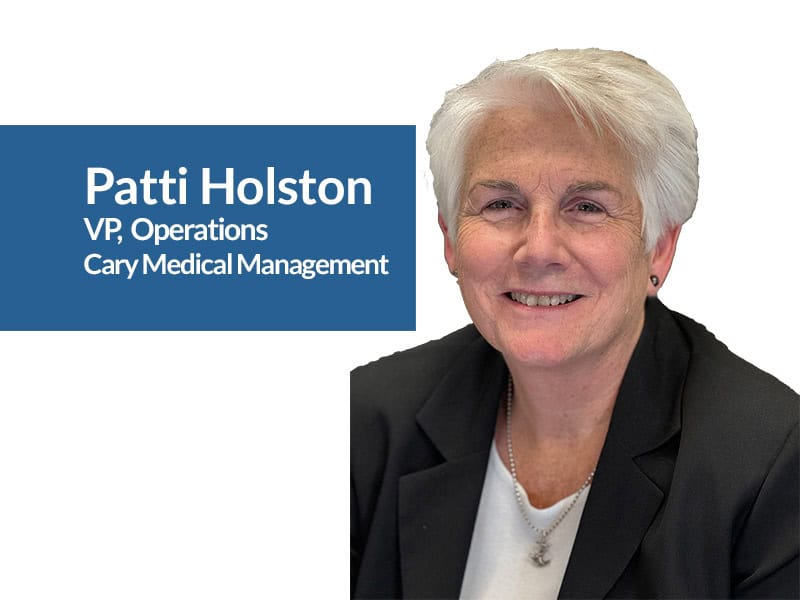Preparing for Value-Based Care: Assess Organizational Readiness
Part one of a three part series on preparing your organization for the transition to value-based care.

Welcome to part-one of our three-part series on preparing for value-based care (VBC). Implementing VBC requires a strategic, three-phased approach to effectively transition from traditional fee-for-service models. This blog focuses on Phase One – assessing organizational readiness. This phase is the foundation upon which successful value-based care implementation is built. In this critical first phase, healthcare organizations must take a comprehensive and honest look at their existing care delivery models, financial structures, and overall readiness for change.
Assessing care delivery involves examining key areas such as care coordination, the effectiveness of multidisciplinary teams, the integration of patient-centered care, and the robustness of chronic disease management and preventive care services. Additionally, the organization must assess the role of technology, including EHR systems, telehealth, and remote monitoring, to determine how well these tools support patient care and outcomes.
Equally important is the evaluation of the organization’s financial structures. This includes analyzing the current balance between fee-for-service and value-based payment models, identifying diverse revenue streams, and understanding the effectiveness of existing incentive structures and cost control measures.
And finally, assessing the leadership’s commitment, staff engagement, and the organization’s culture and experience with change management are crucial to gauging readiness for the transition.
By thoroughly assessing these aspects, the organization can identify strengths, weaknesses, and opportunities for improvement, setting the stage for a strategic and successful shift to value-based care.
Below is a list of questions for you to consider as you perform your assessment to prepare for value-based care.
Assess Existing Care Delivery Models
1. Care Coordination and Integration
How well are care transitions and handoffs managed across our different providers and care settings? How do we currently measure the effectiveness of care transitions, and where are the gaps in coordination that need improvement? What tools or processes can we implement to ensure seamless communication across different care settings?
2. Multidisciplinary Teams
To what extent do we utilize multidisciplinary teams, and how effective is the collaboration among physicians, nurses, and other healthcare professionals? Are there specific areas where multidisciplinary collaboration is lacking, and how can we strengthen these connections? How do we assess the impact of team-based care on patient outcomes and satisfaction?
3. Patient-Centered Care
How do we incorporate patient preferences, needs, and values into our care delivery processes? What mechanisms are in place to gather and act on patient feedback, and how frequently do we evaluate these processes? How do we ensure that care plans are tailored to individual patient preferences while maintaining clinical effectiveness?
4. Chronic Disease Management
What programs do we have in place for managing chronic diseases, and how effective are they in controlling conditions and reducing hospitalizations? How do we monitor the long-term effectiveness of our chronic disease management programs, and what are our key success indicators? What additional resources or support could enhance our chronic disease management efforts?
5. Preventive Care Services
How well are we promoting and delivering preventive care services such as screenings, vaccinations, and wellness visits? What barriers are preventing wider adoption of preventive care services, and how can we overcome them? How do we track and improve our performance in preventive care outreach and patient participation?
6. Use of Technology
How effective are our current EHR systems in supporting care coordination, data sharing, and performance tracking? How well do our current EHR systems integrate with other health IT platforms, and what improvements are needed to enhance data sharing? What additional functionalities could improve our EHR systems to better support value-based care initiatives?
7. Telehealth and Remote Patient Monitoring
To what extent have we adopted telehealth services and remote patient monitoring tools, and how effective are these in improving patient care? How are we measuring the effectiveness and patient satisfaction with our telehealth and remote monitoring services? What challenges are we facing in expanding telehealth adoption, and how can we address them?

Evaluate Financial Structures
1. Payment Models
What proportion of our revenue comes from fee-for-service versus value-based payment models? How are we preparing for the potential shift from fee-for-service to more value-based payment models? What strategies can we implement to maximize revenue under value-based payment structures?
2. Revenue Streams
How diverse are our revenue sources, and what is the financial impact of each source on our overall financial health? What are the risks associated with our current revenue streams, and how can we mitigate them? How can we diversify our revenue sources to ensure long-term financial stability?
3. Incentives and Risk Sharing
What incentive structures do we currently have in place for providers and staff, and how well do they align with value-based care principles? How can we better align our incentive structures to encourage higher-quality care and cost efficiency? What are the potential risks of our current incentive models, and how can we safeguard against them?
4. Financial Performance
What is our current cost per patient, reimbursement rates, and profitability metrics? How do our current financial performance metrics compare to industry benchmarks, and where can we improve? What are the key drivers of cost in our organization, and how can we address them to enhance profitability?
5. Risk Management
How will we manage financial risk, particularly in value-based contracts with upside and downside risk? What additional risk management strategies could help us better navigate financial uncertainties in value-based care?
6. Shared Savings Programs
How will we track our performance in shared savings programs, and what strategies will we try to improve our outcomes? How will we track our ‘lessons learned’, and how can we ensure we apply them moving forward?
7. Cost Control Measures
What measures do we have in place to control costs, and how effective have these measures been? How can we expand or enhance these initiatives? How do we ensure that cost control efforts do not negatively impact patient care quality?
Assess Organizational Readiness for Change
1. Leadership Commitment
How committed is our leadership to transitioning to value-based care, and what steps have they taken to demonstrate this commitment? How do we ensure continuous leadership support and engagement throughout the implementation process?
2. Staff Engagement and Training
How committed is our leadership to transitioning to value-based care, and what steps have they taken to demonstrate this commitment? How do we ensure continuous leadership support and engagement throughout the implementation process?
3. Organizational Culture
How does our current organizational culture support or hinder innovation and quality improvement efforts? What cultural shifts are necessary to fully embrace value-based care principles?
4. Change Management Experience
What has been our experience with managing change in the past, and what lessons have we learned from previous change initiatives? How can we leverage past successes to facilitate a smoother transition to value-based care?
5. Patient Engagement
How engaged are our patients in their own care, and what strategies do we have in place to increase patient involvement and education? What role do patients play in the design and implementation of their care plans, and how can we enhance this collaboration?
6. Community Health Needs
How well do we understand and respond to the health needs and social determinants of health within our community? What partnerships or resources could help us better meet the health needs of our community?
7. Stakeholder Buy-In
How well have we engaged key stakeholders, including providers, patients, and payers, in the planning and implementation of value-based care initiatives? What communication strategies can we use to align stakeholder expectations with our value-based care goals?
As we conclude this first installment of our three-part series on preparing for value-based care (VBC), it’s clear that the foundation for a successful transition lies in a thorough assessment and evaluation. By examining your organization’s current care delivery models, financial structures, and overall readiness for change, you lay the groundwork for informed decision-making and strategic planning. This phase challenges healthcare organizations to take an honest look at where they stand and identify areas that require improvement, ultimately enabling a smoother transition to value-based care. The insights gained during this assessment will be invaluable as you move forward into the subsequent phases, where setting clear goals and implementing actionable strategies will drive your organization toward a sustainable and effective value-based care model.
Ready to jump into Phase Two? Click here for a guide on how to translate the insights you’ve gained in Phase One into actionable objectives.



